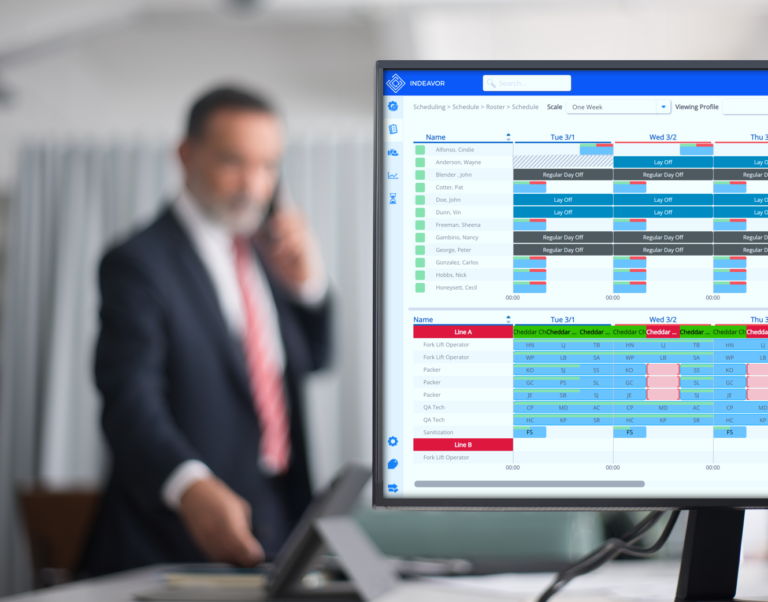In the ever-changing landscape of manufacturing, where efficiency, precision, and adaptability reign supreme, the paradigm of workforce management has undergone a remarkable transformation. No longer can enterprises afford the luxury of static planning, where strategies are cast in stone and adjustments are slow to come. Instead, the industry is embracing the concept of Continuous Planning, a dynamic approach that not only keeps up with the pace of change but thrives on it.
The Shift from Static to Dynamic: A New Era of Planning
A Breakaway From Traditional Planning
Traditional planning, characterized by its incremental milestones and fixed checkpoints, has long been a cornerstone of manufacturing operations. However, in an age where agility is paramount, this approach can feel like trying to hit a moving target. Continuous planning distinguishes itself by its always-updated nature, allowing plans to evolve alongside the business environment. No longer do manufacturers find themselves shackled by rigid timelines; instead, they operate within a framework that adapts in real time.
According to a recent survey by McKinsey, 90 percent of global supply chain leaders expect to overhaul their current planning IT in the next five years.
Inclusivity and Transparency
The limitations of segmented, process-oriented planning have become glaringly apparent. Multiple static plans scattered across different horizons often lead to confusion and inefficiency. With continuous planning, inclusivity takes center stage. Every stakeholder, from top management to the shop floor, is connected within a cohesive ecosystem. This transparency leads to greater collaboration and a shared understanding of the overarching goals.
Overcoming Pain Points
Multiple static plans can quickly turn into a quagmire of effort waste. Stakeholders find themselves bogged down by constant updates across various tools, leading to mistakes and missed opportunities. Mistakes, whether due to inaccurate information or user error, can create cascading effects, leading to costly disruptions in production schedules. The time-consuming nature of managing these disparate plans takes away valuable resources that could be better allocated elsewhere.
“’Continuous’ means we are making course corrections all along the way, before small problems become crises…” – Jon Reed
Embracing Continuous Planning: Overcoming Obstacles
The path to continuous planning is not without its obstacles. Outdated technology, siloed data, and inflexible workflows often form a trinity of challenges that manufacturers must overcome. The reliance on tribal knowledge, while a valuable resource, can become an impediment to embracing the digital transformation needed for a modern manufacturing environment.
However, a natural evolution is underway, driven by technology’s relentless progress and the necessity for agility.
The Digital Transformation Connection
The embrace of continuous planning aligns seamlessly with the broader digital transformation initiatives sweeping across the manufacturing sector. Cutting-edge technology with user-centric design, automation of manual tasks, interoperability, and the infusion of AI into daily operations are all catalysts for this evolution.

Benefits of Continuous Planning for Manufacturers
Why should manufacturers care about this shift? The benefits are manifold:
1. Competitive Advantages: Continuous planning provides a strategic edge by allowing manufacturers to adapt swiftly to market shifts and customer demands.
2. Consistent Labor Strategy: By aligning planning across different horizons, systems, and stakeholders, manufacturers can establish a consistent labor strategy that drives efficiency.
3. Improved Proactiveness: Dynamic planning enables manufacturers to foresee challenges and opportunities, leading to proactive decision-making.
4. Agility and Reactivity: The ability to adjust schedules and plans in real-time ensures manufacturers can react swiftly to changing circumstances.
5. Alignment Across the Board: With all stakeholders operating from a unified platform, alignment becomes intrinsic, eliminating confusion and streamlining operations.
Enabling the Paradigm Shift With Indeavor
Leading the charge in this paradigm shift is Indeavor, a workforce management software company that understands the nuances of manufacturing’s evolving landscape.
A Single Source of Truth
Indeavor’s platform serves as a single source of truth for workforce deployment. This not only ensures accuracy in future planning but empowers organizations to make real-time adjustments in accordance with their broader data and rule sets.
The Power of Connection
Real-time information exchange is a cornerstone of continuous planning, and Indeavor’s platform facilitates seamless connectivity between all stakeholders. Tailored to their unique needs, the platform bridges communication gaps and ensures everyone is on the same page.
The Future of Manufacturing Planning
As manufacturing enterprises embrace continuous planning and purpose-built tools, a new operating reality emerges.
Cultural Transformation
A culture of continuous planning takes root, where change is not just accepted but embraced. Purpose-built tools foster modern workflows, revolutionizing the manufacturing process.
Outcomes Over Processes
The shift to continuous planning marks a transition from process-driven operations to outcome-focused strategies. Manufacturers begin to prioritize results over adherence to rigid plans.
Navigating the Transition to Continuous Planning
Embarking on this journey need not be daunting.
“By 2026, almost all users of continuous planning software will use its capabilities to align strategy and objectives to organizational performance across business silos.” – Robert Kugel
Focus on Data
Data serves as the common denominator across people, processes, and technology. Bridging strategic gaps through purpose-built tools like Indeavor’s platform ensures efficiency while aligning stakeholders.
Step-by-Step Approach
Start small. Embrace change gradually and work with a vendor who can scale as your organization grows. This ensures a smooth transition without overwhelming your team.
Embrace Change Management
Make change management a priority. Align leadership and managers around the significance of continuous planning in the short and long term.
Embracing Continuous Planning in Manufacturing
In the manufacturing realm, continuous planning is more than a strategy—it’s a transformative shift that aligns seamlessly with the digital transformation landscape. With tools like Indeavor leading the way, the industry is poised for a new era of efficiency, agility, and collaboration. The days of static planning are behind us; the future is one of constant adaptation and innovation.
So, embrace the evolution. Embrace continuous planning.
Are you ready to unlock the full potential of your manufacturing workforce?






